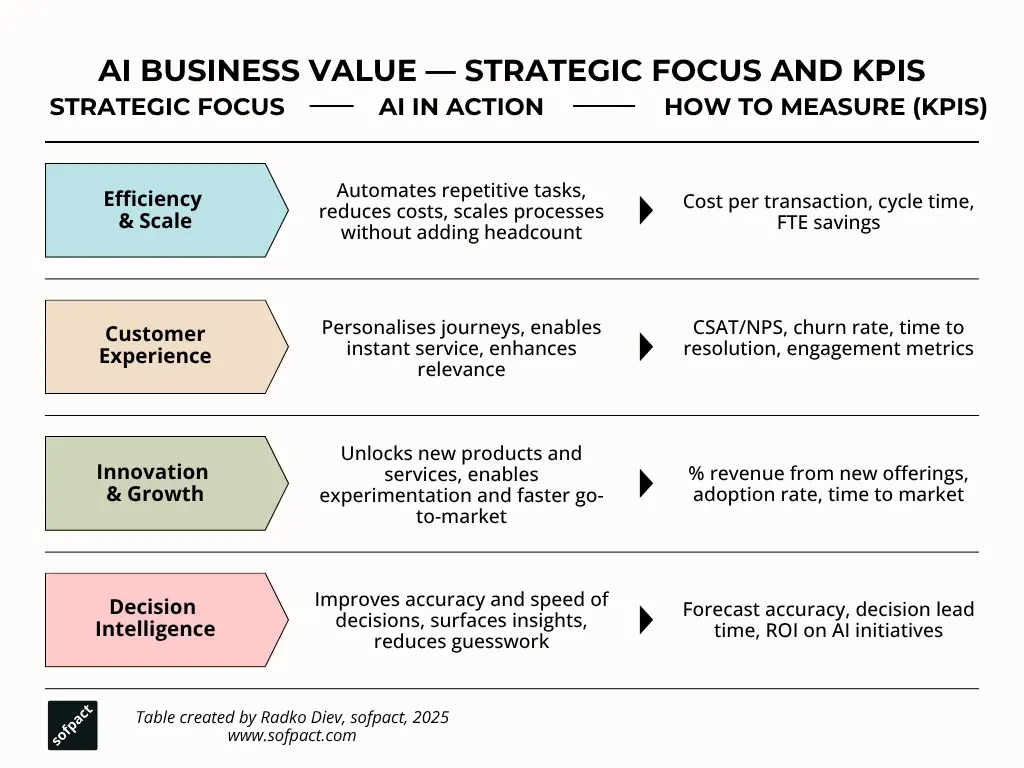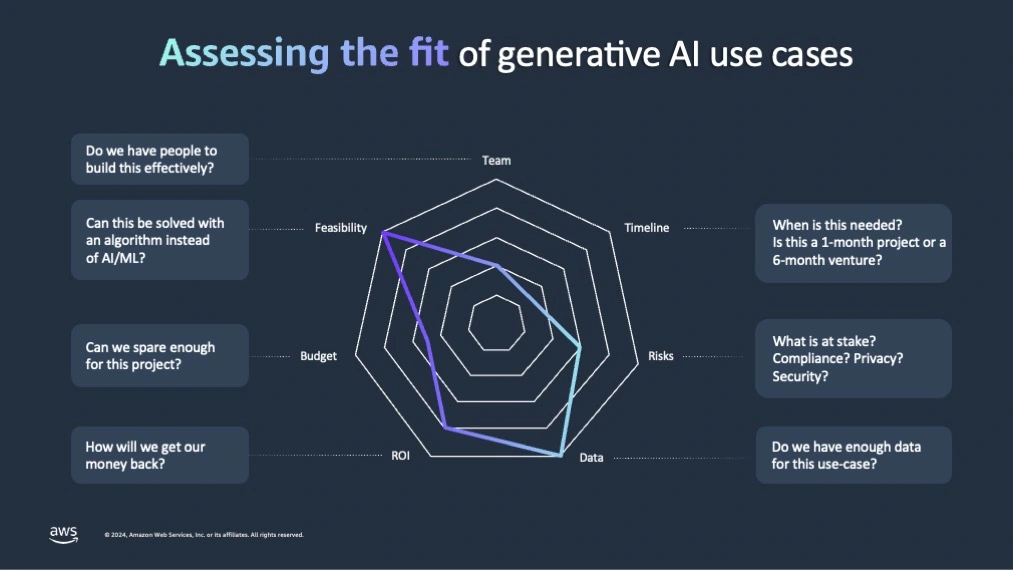What Is an AI Strategy?
When discussing how to build an effective AI strategy for leaders, I was recently speaking at an event in London — packed with senior tech leaders and AI specialists — when a highly respected data scientist said something that stopped me in my tracks:
“As soon as someone says ‘AI’, I can barely continue the conversation. It’s too broad — are we talking ChatGPT, LLMs, generative AI, machine learning, or classic algorithms? No one defines it.”
“AI” has become one of the most overloaded terms in business today. For some, it means a smart chatbot or email automation. For others, it’s building a digital brain that can reason, learn, and optimise.
So, before we define an AI strategy, we need to define what “AI” actually means — in our context.
Let’s be honest: AI has existed in various forms for decades. But for most business leaders, it only became tangible after OpenAI’s launch of ChatGPT on 30 November 2022. That moment marked a step change — not just in usability, but in economics.
“For the first time, the cost of intelligence began to fall — rapidly. Just as cloud made compute abundant, generative AI is doing the same for reasoning.”
This shift made AI accessible not just to data scientists, but to product managers, marketers, support teams — even customers.
Both Google and IBM describe AI as a set of technologies that enable machines to understand, generate, decide, and act — often at a scale and speed beyond what humans can achieve. This encompasses everything from machine learning and neural networks to natural language processing and generative models — all applied to drive insight, automate work, and enable intelligent interaction.
So then — what is an AI strategy?
Here’s how leading institutions define it:
- Microsoft describes an AI strategy as “a defined plan to apply AI responsibly to generate business value,” covering everything from identifying problems worth solving to aligning models and data with goals and governance.
- IBM takes a broader enterprise view, calling it “a coordinated approach to integrating AI across the organisation to improve processes, enhance decision-making, and create new value streams.”
- The UK Government treats AI strategy as a long-term national priority — not just a tech initiative, but a ten-year roadmap for capability, regulation, and inclusion.
The truth is, there’s no one-size-fits-all blueprint. Just like AI itself, AI strategy is deeply contextual — shaped by an organisation’s size, structure, industry, and ambition. It must be personal, practical, and aligned with the realities of that business.
“Every serious AI strategy begins with one question: what value are we trying to create?”
That answer defines everything else — from use cases and talent to investment and governance.
Start with Value
This might sound obvious, but many organisations approach AI from the wrong end. I speak to executives, and the first question they are asking usually are things like:
- “How can we use ChatGPT?”
- “Should we roll out Microsoft Copilot?”
- “What’s this new Claude or Perplexity model about?”
Let’s go back to the business basics — and define what value actually is.
In simple terms, value is the outcome you care about. It’s the improvement that AI is meant to deliver — not in abstract terms, but in practical, measurable ways.
Here’s a simple framework we use at sofpact to help clients define AI value — and link it directly to measurable impact:

Designing Your AI Strategy
Once you’ve identified the value you want to create — or at least prioritised the one most crucial to your organisation — the path becomes clearer.
The natural next step is to identify and prioritise AI use cases. But in practice, many startups and scale-ups hit a wall here. Not because the potential isn’t there — but because the foundations aren’t.
Processes shift weekly. Governance is light. Documentation is sparse. That same agility may fuel growth — but often at the cost of visibility.
For these teams, my advice is simple: map 4–5 core processes first. Nothing too detailed — just enough to understand what gets done, by whom, and with what tools. This alone often surfaces clear AI opportunities.
Once that clarity exists, the next step is assessing organisational readiness.
At this point, I don’t recommend overengineering a new framework. Microsoft, Google, IBM, AWS, and others have all done serious thinking in this space — and their models are worth leaning on.
Microsoft offers a structured AI adoption framework, with a strong focus on governance and responsible use.
IBM emphasises enterprise alignment, process reengineering, and talent strategy.
Google Cloud promotes a three-part strategy: define a clear AI vision, prioritise high-impact use cases, and rigorously measure results. Their approach blends top-down planning with bottom-up operational feedback.
The UK Government provides a national blueprint — treating AI as infrastructure across public services, education, and regulation.
Once processes are mapped, the next challenge is surfacing the right opportunities for AI. This is where identifying use cases becomes both art and science.
Don’t start with the model. Start with the workflow — where time is lost, decisions are repeated, or customers wait. Look for repetitive tasks, information bottlenecks, customer interactions, or high-volume decision points. These are fertile ground for intelligent automation, augmentation, or personalisation.
Once identified, prioritisation becomes critical. Not every use case is worth pursuing — and not every one is ready. For smaller or fast-moving teams, AWS’s “3E” framework is especially actionable — introduced in a January 2025 AWS Partner Network blog. It helps evaluate generative AI use cases through three practical lenses: Ease to Build, Ease to Sell, and Ease to Replicate.

Final Thought
Remember — any strategy is contextual and individual. Tools and trends are powerful, but only when they serve a broader organisational purpose. The real shift comes from improving the processes that create value for your customers or teams.
Your organisation doesn’t need a state-of-the-art open-source model or a company-wide ChatGPT rollout (though that can have its place).
Start small. Solve something real. And build something that works.



